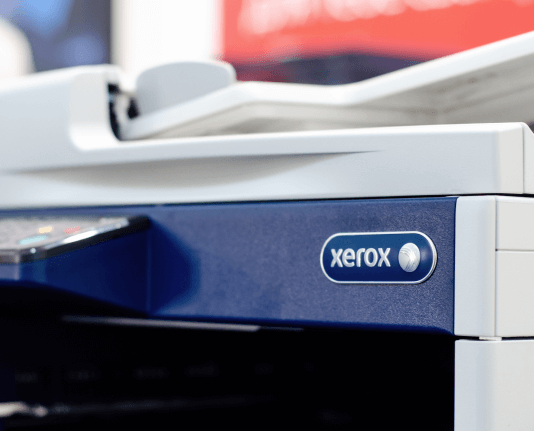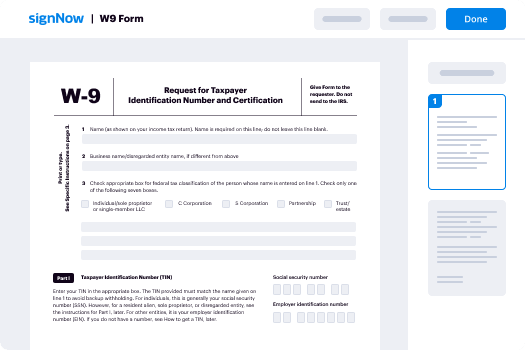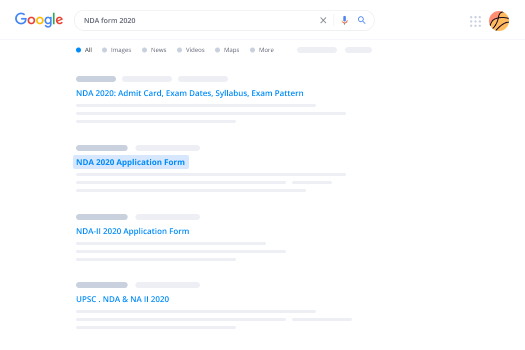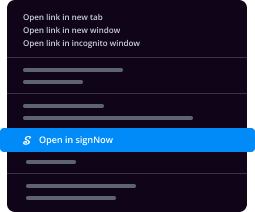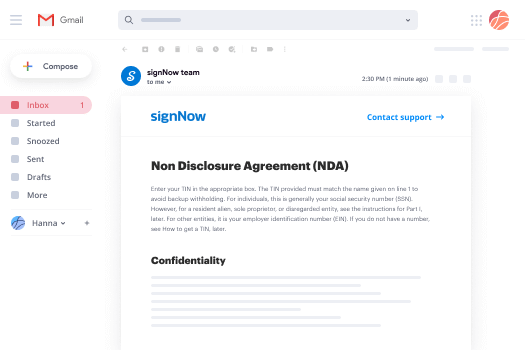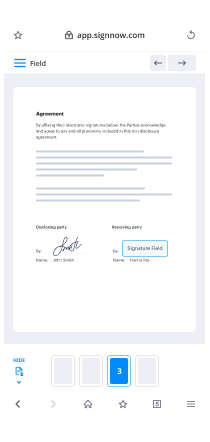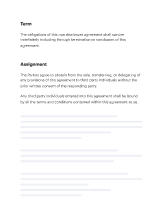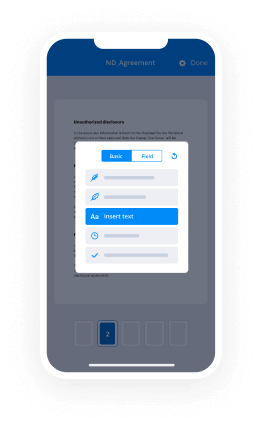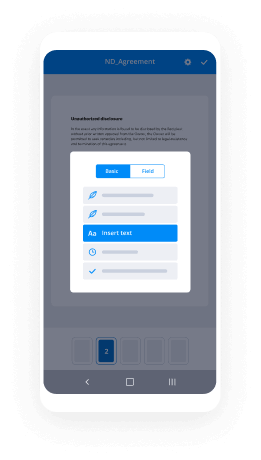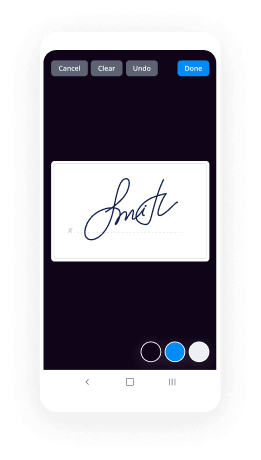How To Add Sign in CMS
Contact Sales
Make the most out of your eSignature workflows with airSlate SignNow
Extensive suite of eSignature tools
Robust integration and API capabilities
Advanced security and compliance
Various collaboration tools
Enjoyable and stress-free signing experience
Extensive support
Keep your eSignature workflows on track
Our user reviews speak for themselves






How to establish a CMS account with airSlate SignNow
Establishing a CMS account with airSlate SignNow is vital for organizations aiming to simplify their document signing workflows. This intuitive platform provides a variety of functionalities aimed at improving productivity and conserving time when managing crucial documents. In this tutorial, we will guide you through the essential procedures to create your account and effectively leverage the advantages of airSlate SignNow.
Procedures to establish a CMS account with airSlate SignNow
- Visit the airSlate SignNow website using your chosen browser.
- Select either to register for a trial version or log into your current account.
- Choose the document you wish to upload for signing or distribution.
- If you intend to utilize this document on multiple occasions, transform it into a template for future reference.
- Access your uploaded document to perform necessary adjustments, such as including fillable fields or incorporating specific data.
- Sign the document and assign signature fields for the intended recipients.
- Click on 'Continue' to complete and dispatch the eSignature invitation.
In summary, creating a CMS account with airSlate SignNow is easy and provides various benefits for organizations. With its comprehensive features and clear pricing, you can enhance your document management workflows without overspending.
Ready to improve your document processes? Register for your free trial of airSlate SignNow today and enjoy the advantages directly!
How it works
Rate sign secure
-
Best ROI. Our customers achieve an average 7x ROI within the first six months.
-
Scales with your use cases. From SMBs to mid-market, airSlate SignNow delivers results for businesses of all sizes.
-
Intuitive UI and API. Sign and send documents from your apps in minutes.
A smarter way to work: —how to industry sign banking integrate
FAQs
-
What is a CMS account in airSlate SignNow?
A CMS account in airSlate SignNow allows users to manage their documents and eSignatures efficiently. This account provides access to a user-friendly dashboard where you can create, send, and track documents securely. With a CMS account, businesses can streamline their workflow and improve document management.
-
How much does a CMS account cost with airSlate SignNow?
The pricing for a CMS account with airSlate SignNow varies based on the plan you choose. We offer several subscription options that cater to different business needs, from individuals to large enterprises. You can visit our pricing page to find a plan that fits your budget and requirements.
-
What features are included in a CMS account?
A CMS account in airSlate SignNow includes features such as document creation, customizable templates, eSignature tools, and real-time tracking. Additionally, users can collaborate with team members and integrate with other apps to enhance their document workflow. These features make managing documents simple and efficient.
-
Can I integrate my CMS account with other applications?
Yes, airSlate SignNow allows you to integrate your CMS account with various applications, such as Google Drive, Dropbox, and CRM systems. These integrations help streamline your workflow by allowing easy access to your documents and eSignatures across different platforms. Enhancing your CMS account with integrations can signNowly improve productivity.
-
What are the benefits of using a CMS account for eSigning documents?
Using a CMS account for eSigning documents provides numerous benefits, including faster turnaround times and improved security. With airSlate SignNow, you can send, receive, and store signed documents securely in one place. This not only speeds up your business processes but also ensures compliance with legal standards.
-
Is my data safe with a CMS account in airSlate SignNow?
Absolutely! Your data is safe with a CMS account in airSlate SignNow due to our robust security measures. We employ encryption protocols and comply with industry standards to protect your sensitive information, ensuring that your documents and eSignatures remain confidential and secure.
-
How can I upgrade my CMS account in airSlate SignNow?
Upgrading your CMS account in airSlate SignNow is a straightforward process. Simply log in to your account, navigate to the account settings, and select the upgrade option. Choose the new plan that fits your needs, and follow the prompts to complete the upgrade seamlessly.
-
Is there a free solution to add a blog to my existing website?
Yes, There are many options to do so. One of the easiest way is to use WordPress CMS for blog.If you have access to file manager or ftp, place WordPress › Blog Tool, Publishing Platform, and CMS in your public_html/yourdomain.com/blog folder and install it. You will have your blog running within minutes.
-
How much time does a beginner need to spend to learn (not just the basics) HTML, CSS, JavaScript, and PHP?
If you have plenty of free time, I would suggest to give atleast 1 hour on Learning things theoritically and atleast 3 hours practicing what you learnt."Practice is the key" here!More time you spend practicing, better you will get at web development.By practicing, I mean writing "real" HTML pages.Assuming you are absolute beginner (you have no idea how to write HTML/CSS), I would suggest you to first learn HTML from www.W3Schools.com and then start with the examples given there along with each chapter.Then, maybe create a web version of your resume using tables.Next step is to learn CSS (again from W3Schools.com) and use what you have learned to convert your resume into div based HTML. Get rid of all the tables and use HTML'sand tags to achieve the exact same look. Add some spice to your resume by adding colors, backgrounds etc. Show some creativity and do some experiments.Then, learn JavaScript (again from W3Schools.com) and make sections in your resume collapsible. Add a contact form to your page and add JavaScript validations.Then learn PHP (you know where to learn from) and add some logic to your resume, like your age should be auto calculated, so should your experience. Add some more spice. Think of what more "calculations" you can do. What "copy-paste" of HTML you can avoid by using arrays and loops. Mail yourself the submissions of your contact form.Just go innovative!Then learn SQL and record all the submissions of your contact us form into Database. Make an admin panel that allows you to Read, Edit, Delete and Search the submissions of your contact form.Now finally it's time to convert all your code in OOPS using classes whereever you can. Also, convert all your MySQL queries to PDO.Now convert all your JavaScript logic using jQuery!If you feel like doing more, make your resume dynamic. Everything in your resume should come from database. Nothing should be hardcoded in the HTML. Need more?Add pages to your admin panel which will allow you to add, edit and remove sections of your resume.There will always be validations written in JavaScript as well as PHP (both) whenever there a form.PS: Googling, reading tutorials, asking others etc is all part of learning.If you do this seriously and dedicatedly enough, you have achieved the following in just 3-6 months:Learnt HTML, CSS, JavaScript, PHP, SQL pretty well. Rest will come with practice, experience and time!Created an awesome resume for yourself to showcase in interviews.Created a mini CMS that would give your resume a big boost.Developed the sense of solving problems when it comes to coding.Learnt where and more importantly HOW to look for solutions when you are struck.Developed confidence in your coding skills and yourself.PS: You will get struck multiple times for hours, maybe days on how to do this particular task. Don't get disheartened. It's perfectly normal and a sign that your learning is paying off!Don't hesitate to ask silly questions. Believe me, no question is really silly, if look at it from the correct angle.All the best and happy learning!
- How do I add live chat in my website?
First, you need to decide which live chat tool you want to use. I’m with LiveChat, a provider of customer service software for online stores. The tool comes with a ticketing system that helps to manage after-hours queries and Reports that allows you to have insight into your service performance.LiveChat is simple to use and install and can be set up in various ways. If you decide that’s a proper solution for you, here’s how you place it on your site:Install LiveChat using a JavaScript code snippet - no coding!a) Log in to your LiveChat account and go to Settings → Channels → Chat widget.b) Copy the code.c) Paste the code to your website’s source code before the tag.d) Then you need to refresh the page to see a chat widget in the bottom right of your page.2. You can install LiveChat using integrationsOur product integrates with over 130 services, including the most popular CMS and e-commerce platforms:WordPressMagentoShopifyBigCommerceWooCommerceVolusionThanks to that you can get a chat widget on your site without coding.3. You can also install LiveChat on your site using Google Tag ManagerFirst, you need to set up your LiveChat account and then follow the steps presented in the tutorial.Hope I helped!- How do you install and host WordPress website in Google cloud platform?
I have given a detailed review about how to install and host wordpress.Check this article for knowing more about web hosting.As the owner of the site, you may be tired of relying on a single server with many periods of inactivity, long load times and higher costs, all are faults that are found when using only the same host. However, " cloud computing allows you to host your site on several servers, which allows you to save money and ensure permanent availability.Google Cloud offers one of the most competitive pricing policies among cloud hosting providers.How to install WordPress in the Google CloudOnce you have purchased Google Cloud, you must sign in to your Google account and access the Google Cloud Console. On the " Project " menu , click on " Create project ":In the next window, complete the project fields, including the name, billing account and location of the application engine. Once you have clicked "Yes" to confirm the terms and conditions, click Create. Go to " API Manager> Library " And in the " Google Cloud API " section, click on " Cloud Deployment Manager API ". Finally, click Activate:Now is the time to implement the WordPress installation! Look for the " Cloud Launcher And on the Blog / CMS tab », Click on WordPress:PEARL: The best WordPress theme for your businessOn the next screen, click Start on " Compute Engine ":You will have to complete the WordPress implementation form before continuing, being sure to check the following boxes:Install phpMyAdmin.Activate « Google Cloud Monitoring To receive regular reports on your service.Allow HTTP and HTTPS traffic, available in the Firewall section.To begin the installation, click Deploy:After WordPress has completed the installation, it will be redirected to the deployment monitor. Be sure to track the administrator and your WordPress password, as well as the MySQL administrator password and phpMyAdmin. To visit the installation, click on "Visit the WordPress website". You can also enter the IP address that is in the address of the site in your browser:Easily create your online storeDownload free WooCommerce, the best ecommerce add-ons to sell your physical and digital products in WordPress. [FREE]It's as simple as that. I hope that now I can install WordPress in Google Cloud successfully.- I have some basic knowledge in HTML, CSS, Bootstrap. Target: learn to make websites with CMS for clients. When site is made, how
I would suggest using an existing CMS like Wordpress for now, since you don’t seem to have the knowledge/skills required to create your own yet.Building your own CMS requires coding a backend in a language like Python, Ruby, Javascript, or PHP, and then tying it in to a database. You’ll need to learn to code in one of those languages and how to interact with a database, before you can create a CMS.Honestly though, even if you could create one yourself, there aren’t many reasons to actually do so. Unless your client has very specific needs that can’t be met by Wordpress or something similar, you should probably just use that instead of reinventing the wheel.- How do I add a CMS page to the navigation menu in Magento 2?
Go to Stores > Configuration > General > Web > Default PagesSt the configuration “Show Breadcrumbs for CMS Pages” as “YES”.- How do i add Django CMS to my existing website?
There are a couple of ways to approach this, depending on what you mean by adding Django CMS to an existing site. Do you mean:How to migrate a non-Django CMS site to use Django CMSHow to integrate Django CMS into an existing Django CMSI have an existing website made with CSS and HTML and am wondering how would I add Django CMS to the website? I don't want to use php or anything like that.Since your question is focused on the first, let’s start there.Migrating a static site to Django CMSActually, let’s start with the CSS part of your question. The good news is that you don’t need to change your CSS. You’ll need to know how to work with static files in Django, but otherwise you can keep these as-is.Presuming you have a static site written in HTML, your HTML is comprised of two things: page layout and content. The end goal is to get the content out of the HTML and loaded via Django CMS.Absent an existing Django project, the first thing you should do is set up a basic Django project using Django CMS. The full scope of how to do that is beyond this post, but the tutorials in the Django CMS docs will be helpful.I’d recommend mapping out the site structure before you start, to get an idea of what content you’re working with and how it’s organized. This includes pages, page types, and content areas in pages.You’ll start porting your static site to Django CMS by creating your templates, and first your base template. A good candidate page might be your home page, or if that’s radically different in structure from other pages, then something else such as a list page. The base might just be a thin frame with a common head element, or it could include a more extensive block structure to be reused by other page types.As you add each page (type) you’ll start identifying content blocks and replacing static HTML content with layout and CMS tags, and then adding the content for individual pages from the CMS.There’s a lot more detail involved in actually doing this, but at a high level I’d recommend you take this strategy. This discounts the use of structured data which is often best provided by a separate Django app and integrated into Django CMS using Django CMS’s plugin concept.- How do I add CMS to an HTML template?
What you should do is adding an HTML template to a CMS and not the other way around.It’s not a simple task and if you have to ask such a question I recommend to pick a CMS and get a theme for it that is close to what you want.Wordpress is a good candidate since its newbie friendly and have a huge theme collection.Actually if you got the HTML template from a designer on internet, is very possible the he already done a wordpress version of it. - How do I add live chat in my website?
Trusted esignature solution— what our customers are saying
Get legally-binding signatures now!
Related searches to How To Add Sign in CMS
Frequently asked questions
How do i add an electronic signature to a word document?
What is a live electronic signature?
Where to sign in to the clarion ledger e-newspapers?
Find out other How To Add Sign in CMS
- Cross country time sheet form
- Landlord notice housing act 1988 section 21 notice requiring possession to name and address of tenants tenants name tenants form
- Ax paris returns form
- Crasm application form pdf
- Mobc scholarship form
- Letter of diagnosis from doctor form
- Griha aadhar scheme form
- Pceia general insurance exam questions form
- Multiplication drills pdf form
- Medical certificate format pdf
- Age declaration form for voter id
- Sambalpur university marksheet download form
- Spcc1 form
- Agriculture quota certificate format
- Comparing and ordering rational numbers worksheet answer key pdf form
- Tum defer admission form
- Student course transfer form tum ac
- Va form 26 1880 100000355
- Where can i get a print for a pre employment physical form
- Doctors note for school form

